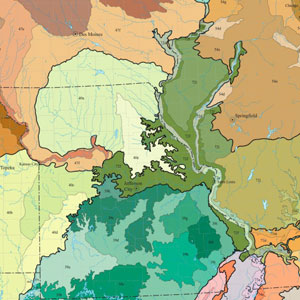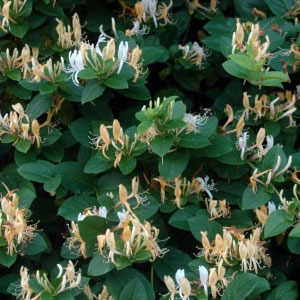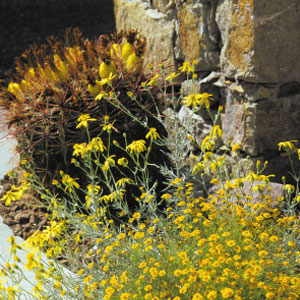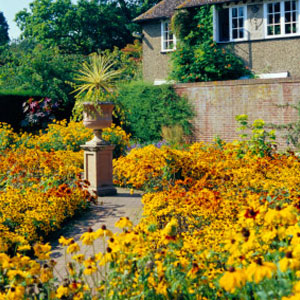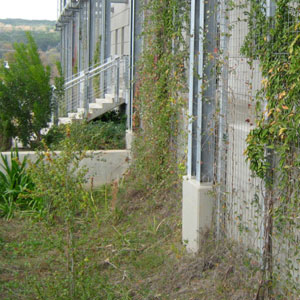
Gardening for Wildlife
The good news is that residential landscapes can be home for both humans and wildlife. We can share our landscapes with the plants and animals with which we have co-evolved. The first step when gardening for wildlife is to determine the priority species. Then identify the food, water, shelter and other resources each animal requires. Here are the essentials:
Provide food.
The best food source is often a diverse selection of native plants. For the vast majority of native wildlife, most of the non-native plants we’ve favored in our landscapes for more than a century do not provide sufficient food. That includes the insects on which 96 percent of all terrestrial birds depend. But when you plant native trees, shrubs and herbaceous plants, you provide wildlife with the nectar, pollen, fruits, leaves, seeds and nuts — and associated insects — that have nourished them for millennia. Space is limited in the typical home garden, so it makes sense to plant the natives that are the champions at providing food and shelter for birds and other wildlife.
Provide water.
Like all living things, wildlife needs water for drinking as well as bathing and cooling off. Water can be a scarce commodity in arid areas and in cities. Nature provides water to wildlife in a multitude of ways that the homeowner can replicate, such as a shallow in-ground pool or pond, water barrel or birdbath.
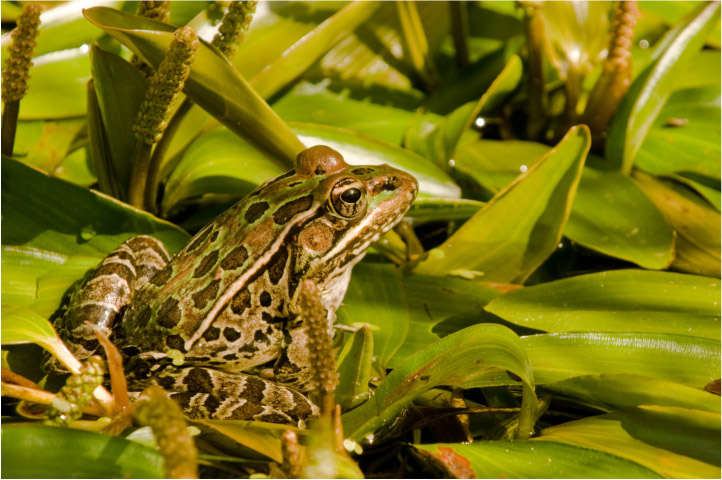
A leopard frog at home in a vegetated pond. Image credit: Wildflower Center
Create places to hide, rest and nest.
Native trees, shrubs, thickets, grasses, brush piles and man-made wildlife houses serve as home and shelter. For birds, all trees and shrubs provide cover, but none are better than evergreens, especially conifers. And the seeds in their cones are an important source of food for some species. As with other plants for wildlife, regionally native pines and other conifers are best, since they are more likely to host the native insects upon which birds depend.
Homeowners should avoid the use of pesticides, which can harm birds and other wildlife directly or contaminate the flowers or vegetation that are their food source. To provide maximum habitat for the widest array of wildlife, it helps to recreate the vertical layers of vegetation — trees, shrubs, flowers and grasses — found in nearby natural areas.
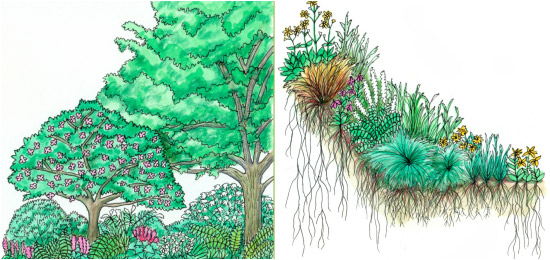 All native plant communities consist of vertical layers, which are most obvious in forested regions. The tallest layer of a forest is called the canopy and is composed of mature trees. The highest canopy trees may be 100 feet or more, while the lowest grow to about 30 feet. The next layer down is called the understory. It is composed of saplings of canopy tree species as well as smaller flowering trees such as dogwoods and redbud. The understory layer rises from about 12 to 30 feet above the ground. The shrub layer is the lowest layer of woody vegetation. It occupies the area between 3 and 12 feet. The lowest aboveground layer of a forest, below 3 feet, is called the ground layer. Here, wildflowers, ferns, grasses and sedges grow in often spectacular combinations. Plants in the ground layer also partition their environment vertically. Spring ephemeral wildflowers bloom first, typically raising their foliage only a few inches above the leaf litter. As they go dormant, taller ferns and wildflowers grow around and over them.
All native plant communities consist of vertical layers, which are most obvious in forested regions. The tallest layer of a forest is called the canopy and is composed of mature trees. The highest canopy trees may be 100 feet or more, while the lowest grow to about 30 feet. The next layer down is called the understory. It is composed of saplings of canopy tree species as well as smaller flowering trees such as dogwoods and redbud. The understory layer rises from about 12 to 30 feet above the ground. The shrub layer is the lowest layer of woody vegetation. It occupies the area between 3 and 12 feet. The lowest aboveground layer of a forest, below 3 feet, is called the ground layer. Here, wildflowers, ferns, grasses and sedges grow in often spectacular combinations. Plants in the ground layer also partition their environment vertically. Spring ephemeral wildflowers bloom first, typically raising their foliage only a few inches above the leaf litter. As they go dormant, taller ferns and wildflowers grow around and over them.
Prairies and other communities dominated by herbaceous plants also have distinct vertical layers. The earliest plants to emerge in spring are low to the ground. Each successive emerging plant overtops the next, culminating with the tallest grasses and late-blooming asters and other composites that end the growing season. The layers also extend below the ground, from fibrous-rooted grasses to wildflowers with deep taproots.
In general, the more vertical layers there are, the more complex the vegetative structure and the more habitat created for a wider array of animal life.

